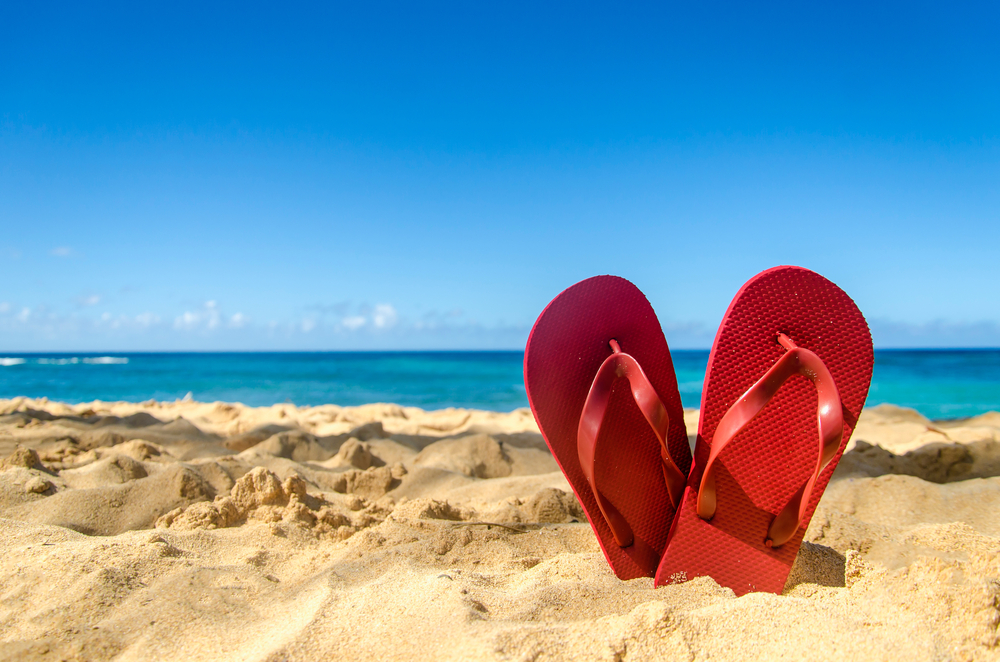It’s easy to understand why we all love flip-flops: They’re cute and comfy, keep your feet cool in warm weather, and are great for showing off that fab pedicure you just got. But no matter how much you adore your flip-flops, they shouldn’t be all-occasion footwear. Sometimes, they can lead to sore feet or even severe injury.
“Flip-flops are hugely popular, but it’s important to remember they’re not appropriate for everyday wear or for all occasions,” says Marcus Yetter, DPM, a podiatrist at Ankle & Foot Clinic of Orange County and member of the American Podiatric Medical Association (APMA). “Every spring and summer, podiatric offices see an influx of patients with injuries and ailments directly related to wearing flip-flops at the wrong time or wearing the wrong flip-flops altogether.”
The secret to safely enjoying flip-flops through summer is two-fold, Dr. Yetter says. First, find the right style, and second, know when to wear flip-flops and when to wear something else.
How to choose flip-flops
Some styles of flip-flops may cause blistering and pain, and increase your risk of injury in certain situations. It is possible to find a better flip-flop. APMA offers some tips:
- Look for high-quality, soft leather, which will minimize the risk of blisters and other skin irritations. Vinyl or rubber styles are more likely to rub your foot the wrong way. Find footwear products that have earned APMA’s Seal of Acceptance by visiting apma.org/seal. The seal indicates that a team of APMA podiatrists has evaluated the product to ensure it promotes normal foot function and health.
- Choose a flip-flop with soles that bend at the ball of the foot. If you can bend the sole completely in half or wring it like a wet rag, the sole will not provide proper support.
- The thong part of the flip-flop should fit comfortably, neither too loose nor too snug. Straps that are too tight could rub and cause blisters. Too-loose straps may result in you losing the shoe at a critical moment—resulting in injury. Consider a flip-flop with extra padding on the part of the strap that fits between your toes.
- Your foot should fit perfectly on the sole. Your heel should not hang off the back, nor your toes off the front.
- Dispose of worn flip-flips, no matter how much you loved them last year. Old shoes lose their ability to support and protect your feet, and it’s easy to find a new pair to replace old ones.
When to wear flip-flops
A shoe style that was once relegated to beach or poolside is now considered acceptable in a variety of settings. It’s not uncommon to see people wearing flip-flops to the mall or grocery store, when they’re out for a stroll, or even in the office. Flip-flops have even made inroads into the bridal scene, with some comfort-minded brides wearing them for their weddings and receptions.
Deciding whether wearing flip-flops is socially appropriate for the occasion is up to you, but there are some times when you should not wear them for safety reasons.
- When doing yard work—such as mowing the lawn or working in the garden—it’s best to wear shoes that cover and protect your entire foot. Flip-flops don’t offer sufficient support or protection.
- For long walks, opt for a good walking shoe. Even the sturdiest styles of flip-flops don’t offer sufficient arch support and shock absorption for extended walking.
- Playing sports calls for the right footwear. Choose a shoe that is designed for the sport you’re playing. Flip-flops don’t offer adequate support or protection for hard play and may come off your foot at a crucial moment. They might lose you the game at best, and leave you with a foot or ankle injury at worst.
Finally, put away your flip-flops when the weather is bad. “This one may seem obvious,” Dr. Yetter says, “but some people continue to wear their flip-flops even when the temperature drops, rain falls, or snow is on the ground. Wearing flip-flops in bad weather puts you at risk of injury if your foot slips out of a wet shoe or even frostbite if temperatures fall too low.”
Dr. Marcus Yetter, DPM, is a podiatrist at Ankle & Foot Clinic of Orange County in Laguna Beach, CA. Call (949) 499-4534 or visit www.footdr.com to make an appointment. Visit www.apma.org to learn more about foot health and care.

